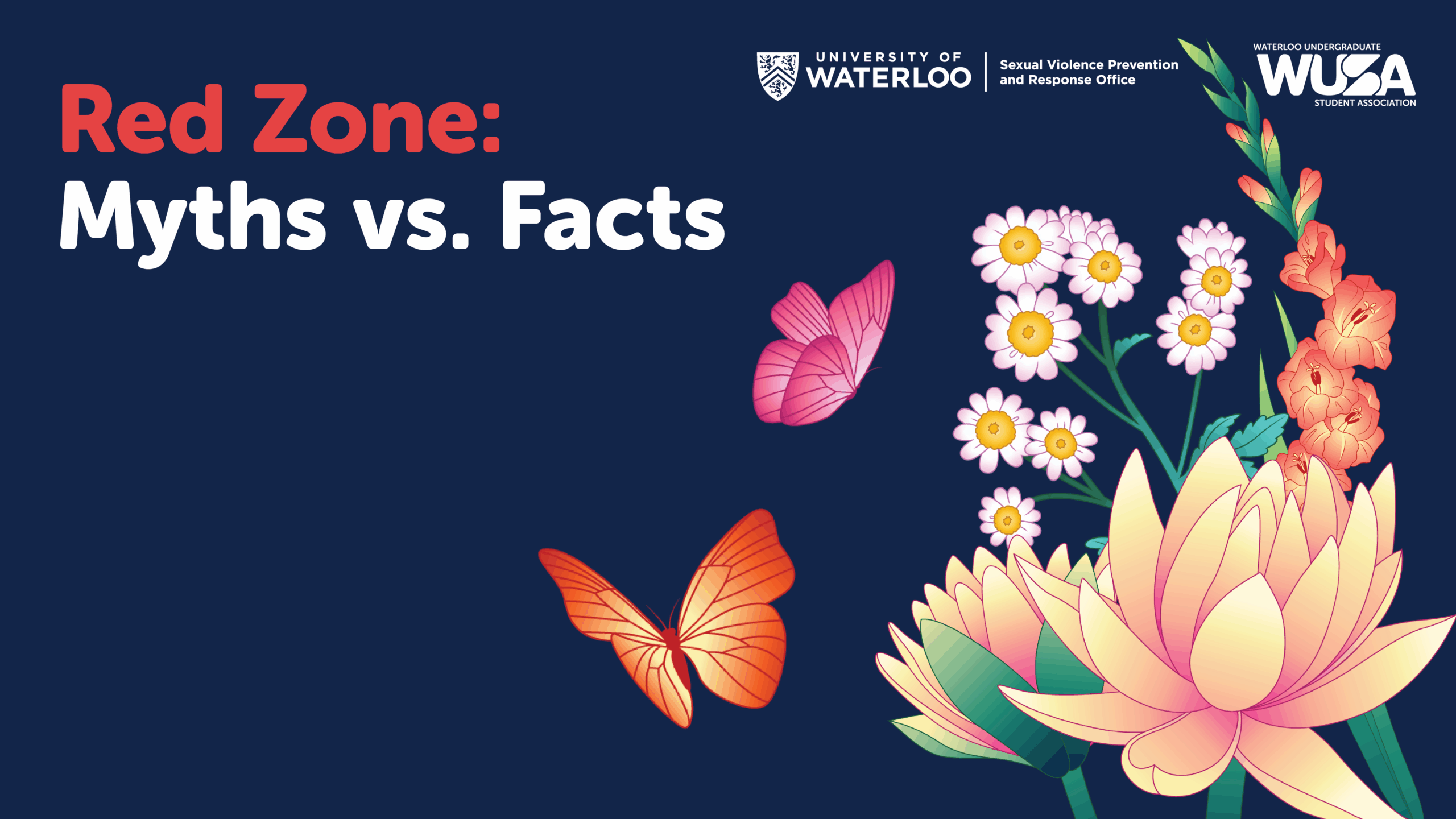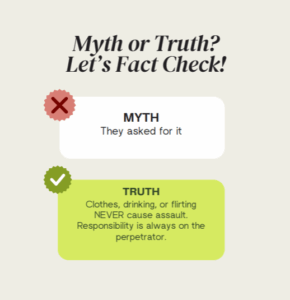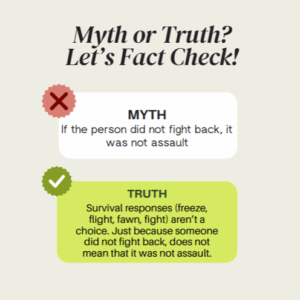Myths and Facts About Sexual and Gender-Based Violence

Trigger warning: This article discusses sexual and gender-based violence, including common myths and misconceptions, consent, survivor experiences, and the emotional and psychological impacts of assault. It includes references to trauma, harassment, and societal attitudes that may be distressing for some readers. Please take care while reading, and consider stepping away if you need support.
The first six to eight weeks of the school year are often called the Red Zone on college and university campuses. During this time, students are at a much higher risk of experiencing sexual and gender-based violence. The mix of new environments, social pressures, and parties can create unsafe situations.
That’s why it’s so important to clear up some of the biggest misconceptions. Myths about sexual and gender-based violence not only normalize harmful behaviour but also make it harder for survivors to come forward and get support. Let’s break them down.
Common Myths about Sexual and Gender-Based Violence

Another common myth is that being nice, buying someone things, or being in a position of power means you’re owed sex. The truth is no one is ever owed intimacy. Consent must always be freely given, without pressure or manipulation.
We often hear the idea that perpetrators are always strangers. In reality, most are people the survivor knows: friends, classmates, coworkers, or even partners. And while people sometimes assume men cannot be survivors, anyone, regardless of gender, age, or orientation, can experience sexual violence.
Some people think certain groups—like sex workers or those of a different sexual orientation cannot be sexually assaulted. In actuality, everyone has the right to consent and to set boundaries. Consent is required for every person, every time.
It’s also important to remember that consent isn’t only about saying the word “no.” Silence, fear, intoxication, being asleep, or being pressured do not equal consent. Consent has to be clear, active, and ongoing.
There is an incredibly harmful belief that ‘if the answer is not “no”, it’s a “yes”’. No one enjoys being forced into sex, and if you’re unsure, the answer is to ask and respect what the other person says.
Another damaging assumption is that if you’ve had sex with someone before, it can’t be sexual assault. But past sexual activity, even in long-term relationships or marriage, doesn’t equal permanent consent. Each separate encounter requires agreement.
Some people claim that survivors often lie about being assaulted. In fact, false reports are extremely rare. In reality, sexual assault is one of the most underreported crimes with most survivors never coming forward because they fear not being believed, feel ashamed, or fear retaliation.
Others believe that sexual assault only counts if there’s a struggle or visible injuries. Many survivors freeze, dissociate, or don’t fight back because they’re afraid. The absence of injuries doesn’t make an experience any less real. In the same way, it’s not always possible to “just fight back” or run away. The body’s automatic responses to trauma; fight, flight, freeze, or fawn isn’t something we get to choose.
The effects of sexual violence don’t end with the moment. Survivors may carry emotional, mental, and physical impacts that last for years. This is why minimizing sexual violence as “not a big deal” or claiming it doesn’t cause long-term harm is incredibly damaging.

Every form of sexual violence matters, from harassment and groping to more extreme cases. Everyone deserves safety, respect, and autonomy over their own body. That’s also why jokes about rape aren’t harmless—they normalize violence, make light of survivors’ experiences, and create unsafe environments.
Survivors may not remember every detail of what happened, and trauma can affect memory. Forgetting or recalling events out of order doesn’t make the experience less real. And while we might expect that reporting an assault would lead to conviction, most cases aren’t reported at all, and even reported cases rarely move forward in the justice system.
Understanding these myths helps us build a safer campus community. Believing survivors, respecting boundaries, and challenging harmful attitudes are all steps toward ending sexual and gender-based violence, especially during the Red Zone.
Alexandra Minard
Communications Assistant
Published: Wednesday, September 24, 2025

